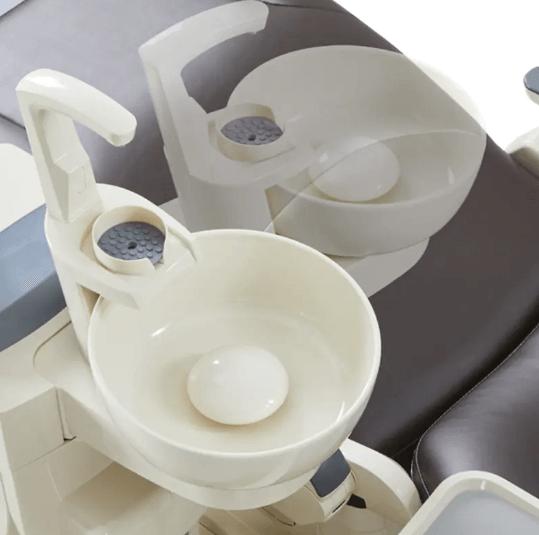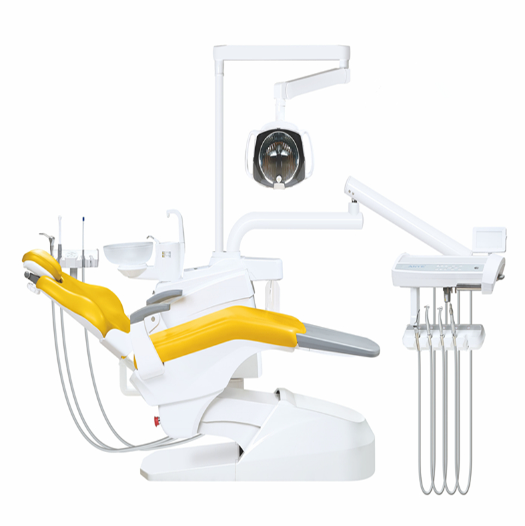Complete Guide to Select the Right Dental Chair Delivery System
The efficiency and precision of a dental practice rely heavily on the equipment and systems used daily. Among these, the dental chair delivery system stands as a linchpin, orchestrating the seamless flow of tools and instruments essential for patient care. The decision to choose the right dental chair delivery system is paramount, considering its impact on workflow optimization, practitioner comfort, and patient experience. In this post, the author would guide you about how to choose the right dental chair delivery system.
What is the Role of Dental Chair Delivery Systems?
Dental chair delivery systems serve as the central hub in dental operatories, encompassing various tools required for treatments. These systems not only streamline workflows but also play a pivotal role in ensuring practitioner comfort and providing a conducive environment for patients undergoing treatment.
What are the Types of Dental Chair Delivery Systems?
Dental chair delivery systems are crucial components in dental practices, providing the necessary tools and equipment for practitioners to efficiently carry out various procedures. Let's delve deeper into these diverse types:
Ceiling-Mounted Systems
These systems are suspended from the ceiling, offering a space-saving solution while providing easy access to instruments and tools. They allow for greater flexibility in chair positioning, enabling practitioners to customize the setup according to individual patient needs. Ceiling-mounted systems often contribute to a clutter-free workspace by keeping the floor clear of units and cords.
Rear-Delivery Systems
In these setups, the equipment is positioned behind the patient's chair, offering an unobstructed view for both the dentist and the patient. This configuration maximizes the working area and allows for enhanced ergonomics by keeping instruments within easy reach while maintaining a clear line of sight.
Unit-Mounted Systems
Integrated into the dental unit itself, these systems consolidate the necessary tools directly onto the chair or unit structure. They often feature streamlined designs, minimizing clutter and optimizing space while providing essential functionalities for various dental procedures.
Portable Delivery Systems
Ideal for mobile or temporary dental services, portable systems are compact, lightweight, and designed for easy transportation. These units offer basic functionalities necessary for routine check-ups or emergency dental care in diverse settings, such as community centers, nursing homes, or remote locations.
Hybrid Systems
Combining features from multiple delivery systems, hybrid setups offer tailored solutions to meet specific practice requirements. They may integrate elements of chair-mounted, wall-mounted, or cart systems, providing practitioners with customizable configurations for optimal efficiency and workflow.
Critical Factors in Choosing the Right System
In this section, the author will list the critical factors when you choose the dental chair delivery systems.
Practice Needs Assessment
Understanding the unique dynamics of a dental practice is crucial. Beyond the physical space considerations, it's essential to evaluate workflow intricacies, patient demographics, and any specialized services offered. For instance, a pediatric dental office might prioritize a system that caters to children's comfort, while a general practice might focus on versatility to accommodate various procedures efficiently.
Prioritizing Ergonomics and Comfort
Dentistry involves prolonged periods of intricate work, making practitioner comfort vital for sustained quality care. Adjustable chairs, well-designed instruments, and adaptable workstations mitigate strain and fatigue, ultimately enhancing productivity and reducing the risk of work-related injuries. Similarly, patient accessibility and comfort contribute significantly to their overall experience, potentially impacting retention and referrals.
Integration of Technology
Dental technology evolves rapidly, from digital imaging to practice management software. Choosing a system that integrates seamlessly with current technologies and allows for future upgrades ensures staying at the forefront of advancements. Compatibility with electronic health records (EHR) and imaging systems not only streamlines operations but also enhances diagnostic capabilities and patient communication.
Ensuring Maintenance and Durability
Longevity and reliability are paramount. Evaluating the quality of materials used in the system, understanding maintenance requirements, and considering the ease of servicing are crucial for minimizing downtime and unexpected costs. Investing in a durable system often translates to a more cost-effective and dependable solution in the long run.
Emphasis on Infection Control
Dental settings require meticulous adherence to infection control protocols to safeguard both patients and staff. A system that incorporates features promoting rigorous sterilization practices—such as smooth surfaces for easy cleaning, autoclavable components, and anti-microbial materials—plays a pivotal role in preventing cross-contamination and maintaining a safe clinical environment.
Conclusion
Selecting the ideal dental chair delivery system transcends mere equipment procurement; it’s a strategic decision that shapes the efficiency, comfort, and safety standards of a dental practice.
This decision, while seemingly technical, ultimately impacts the operational efficiency, patient experience, and overall success of the practice. Choosing the right dental chair delivery system is, therefore, an investment in the foundation of a thriving dental practice.
This decision, while seemingly technical, ultimately impacts the operational efficiency, patient experience, and overall success of the practice. Choosing the right dental chair delivery system is, therefore, an investment in the foundation of a thriving dental practice.



Leave a comment